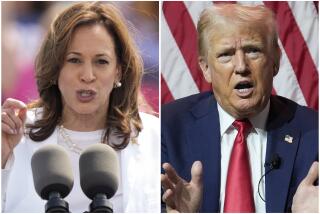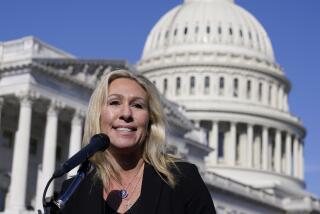Bailouts are shaping up to be cheaper than expected
- Share via
Reporting from Washington — Almost three years after a series of government bailouts began, what many feared would be a deep black hole for taxpayer money isn’t looking nearly so dark.
The brighter picture is highlighted by the outlook for the bailouts’ centerpiece — the $700-billion Troubled Asset Relief Program.
“It’s turning out to cost one heck of a lot less than what we all thought at the beginning,” said Ted Kaufman, a former U.S. senator from Delaware who heads the congressionally appointed panel overseeing TARP.
In mid-2009, the program was projected to lose as much as $341 billion. That’s been reduced to $25 billion — partly because of the controversial decision to pump much of the TARP money into banks instead of launching a large-scale purchase of securities backed by toxic subprime mortgages.
There is now broad agreement that the bailouts worked, stabilizing the financial system and preventing an even deeper crisis.
Still, many people are worried about the long-term effects of the government actions. They said that in demonstrating a belief that some companies were too big to fail, the government set a dangerous precedent, opening the door to future crises.
Those critics also said that hundreds of billions of dollars in bailout money from TARP, the Treasury and the Federal Reserve will not come back, mainly because of the rising tab for seized housing finance giants Fannie Mae and Freddie Mac, which combined have consumed $150 billion in taxpayer money so far.
“We’re not going to recoup those losses,” said Rep. Patrick McHenry (R-N.C.), chairman of the House Oversight and Government Reform subcommittee monitoring the bailouts. “It’s extraordinary, just absolutely extraordinary.”
Fannie and Freddie, which the Obama administration recently proposed to shut down, are the main reason most recent estimates of losses for all the various bailout efforts range from $238 billion to $380 billion. || Chart: Cost of federal bailouts
But Treasury officials think those estimates might be too high. They said the total cost of all the financial interventions is likely to be less than $140 billion, or 1% of the United State’s $14-trillion annual economic output.
That’s less expensive than the federal losses from the savings and loan crisis in the late 1980s and early 1990s, which cost an estimated 2.4% of the nation’s annual economic output at the time, according to a study by the International Monetary Fund.
In the recent recession, the federal government intervened with “overwhelming force and speed,” said Timothy Massad, TARP’s acting manager.
“We stopped the panic,” he said. “We were then able to recapitalize the system very quickly with private capital … get the credit markets working again, and that laid the foundation for an economic recovery.”
Government intervention in the financial system expanded rapidly after the Federal Reserve decided in March 2008 to provide a $30-billion line of credit to engineer the sale of investment bank Bear Stearns Cos.
Hundreds of billions of dollars from TARP, the U.S. Treasury and the Fed were funneled into banks, Wall Street financial institutions and the auto industry as the recession deepened and as the credit crisis and a pile of soon-worthless securities threatened the worldwide financial structure.
The bleak prospects for recouping taxpayer funds, though, began to improve even though jobs evaporated and unemployment rates soared.
Banks have paid back close to all of the $245 billion they received, and the Treasury Department estimates that interest and dividends on those cash infusions ultimately will give taxpayers a $20-billion profit.
Last year’s highly successful stock offering by General Motors Co. means losses from its rescue, along with losses from rescuing fellow automaker Chrysler and the two companies’ financing arms, are projected to be $19 billion — much less than what was anticipated when the government pumped about $80 billion into the auto industry. || Related article: GM’s profit in 2010 highlights big turnaround
And a rise in the stock price of worldwide insurer American International Group Inc. as it sells many of its assets has reduced the estimated taxpayer cost to $14 billion on financial aid totaling about $125 billion. The New York company has vowed to pay it all back.
The decision by former Treasury Secretary Henry M. Paulson in fall 2008 to shift TARP from its original mission kept the government from taking ownership of hundreds of billions of dollars in securities backed by bad mortgages.
“It was clear in the fall that you didn’t have time for that because the crisis was too great and moving too quickly,” Massad said.
If money had not been pumped directly into the largest banks, he said, “I think you then would have been presiding over a collapse of the financial system and potentially a second Great Depression.”
On top of that, taxpayers would have been saddled for years with bad assets.
A study last year by Mark Zandi, chief economist at Moody’s Analytics, and Alan Blinder, a Princeton economist and former Fed governor, concluded that TARP “has been a substantial success.”
Zandi said the cash injections were necessary to stem the marketwide panic. Because TARP funds were not used to make large-scale purchases of toxic assets, which were riskier investments that it would have had to hold longer, the program was able to recover much of its money sooner.
“It’s a question for the ages whether they did the right thing,” TARP overseer Kaufman said.
The Treasury Department launched a much smaller initiative in 2009 to buy toxic assets through public-private partnerships. But that program came after the financial system had stabilized, and it spent only about $15 billion in TARP money. The program is projected to lose about $2 billion.
The toxic assets held by Fannie and Freddie are leading to such huge losses that their bailouts could cost as much as $363 billion through 2013 — but only if there is a deep, second housing recession, according to projections last year by the Federal Housing Finance Agency, which oversees Fannie and Freddie.
A stronger housing recovery could mean Fannie and Freddie would need only about $71 billion more, the report said. Zandi said it’s possible those bailouts also could cost less than anticipated.
“The script on Fannie and Freddie is still being written,” he said. “We could end up saying Fannie and Freddie didn’t cost us all that much either.”
But the bailouts have been deeply unpopular. Critics point to them as a symbol of costly overreach and as proof that the government thought some companies were too big to fail.
In a Newsweek poll last fall, 63% of respondents said the government’s actions to rescue the banking and financial system were bad for the country.
But some of that anger appears to be fueled by misconception, Kaufman said. He cited a Bloomberg poll last fall in which 60% of respondents said they thought most of the TARP money would not be recovered.
A good chunk of the money never was spent. Just $410 billion was distributed. And because the program formally ended last year and only its existing initiatives can continue to be funded, it will not spend more than $475 billion.
Massad said Treasury officials understand why the program has been so reviled, but added that the public should focus on the bottom line.
“We did what we had to do, it worked better than people thought, and it’s been far cheaper than people thought it would be,” he said.
More to Read
Inside the business of entertainment
The Wide Shot brings you news, analysis and insights on everything from streaming wars to production — and what it all means for the future.
You may occasionally receive promotional content from the Los Angeles Times.











